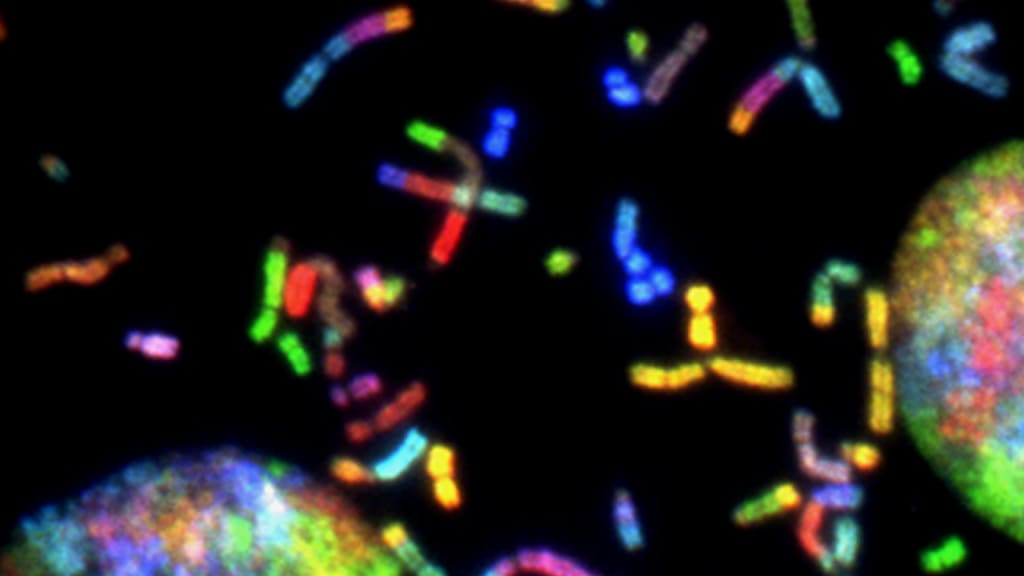The 5 Core Concepts of Existence
Core principles of life

There is no definitive definition of life. The distinction between living and non-living entities is not a straightforward matter. Although it may appear to be a simple inquiry, it is, in fact, a complex one. Various intricate responses are frequently found in sources such as Wikipedia or dictionaries. This is a fundamental query in the field of biology, and I aim to provide a resolution. My approach involves an examination of five prominent biological concepts.
The cell holds significant importance in my contemplation of the enigma of existence, as it is the sole entity that embodies the essential characteristics of life. It possesses the ability to grow, divide, and reproduce. Furthermore, all living organisms, be they plants or animals, are composed of a single cell or a collective group of cells that function together. Although yeast may not evoke enthusiasm in most individuals (I find yeast quite fascinating), its significance extends beyond its role in producing beer, wine, or bread. Yeast serves as an excellent model for comprehending the complexities of cells in various other living organisms, including ourselves. For instance, there exists a human gene that bears resemblance to the yeast gene responsible for regulating cell reproduction from one to two. Remarkably, this human gene can fully substitute the yeast gene and effectively control the reproduction of yeast cells, just as it does for human cells. This striking similarity and the functional interchangeability of these genes imply that they are essentially the same, despite having diverged for up to 1.5 billion years between the two organisms. Consequently, this signifies that every other living entity we encounter, whether it be an animal, plant, or fungus, is governed by the same underlying mechanism.
Gregor Mendel, a monk, developed a keen interest in the genetics of peas. He conducted crossbreeding experiments between peas with different characteristics and meticulously recorded the resulting offspring. To his surprise, he observed distinct and consistent ratios, such as 1:3 and 3:9. Mendel hypothesized that a unitary particle, which he called a gene, was responsible for inheritance and could be passed down from one plant to another.
The concept of evolution through natural selection is, in my opinion, one of the most remarkable ideas in biology. Charles Darwin, a renowned naturalist who travelled the world collecting specimens of animals, birds, and plants, proposed this theory. He postulated that all living organisms possess hereditary material and that this material would eventually dominate evolution if it had advantageous differences that allowed the organism to adapt to its environment. This revolutionary idea has transformed our understanding of biology, as it suggests that living organisms are shaped by their environment.
Life is composed of molecules and chemicals. Within the minute cell, numerous chemical reactions occur constantly. Chemistry plays a crucial role in the cell's growth, reproduction, and ability to harness and utilize energy. This is made possible by the presence of numerous tiny compartments called organelles, where various chemical reactions take place simultaneously. One can envision a cell as a miniature entity containing factories, warehouses, transportation systems, and power plants. The sheer magnitude of thousands of distinct chemical reactions occurring in such a small space is truly remarkable. In essence, life is fundamentally rooted in chemistry.
Furthermore, life is reliant on information. The management of information is a constant necessity for life. As previously mentioned, chemical reactions within organelles require information transmission to ensure coordination. For instance, a gene may produce a substance and strive to maintain a consistent level of that substance. When the substance increases, the gene is switched off, and when it decreases, the gene is activated. However, a comprehensive understanding of this process only emerges when one recognizes the presence of information management. The cell measures the quantity of substances it possesses and utilizes this information to determine whether a gene should be activated or deactivated. Taking DNA as an example, its structure can be comprehended in terms of the relationship between different bases. However, its biological significance is fully realized when viewed as a digital information storage device. Life operates solely through information and it permeates every aspect of its functioning.
When these five concepts are combined, certain principles become apparent. Living organisms are physical entities with defined boundaries. These boundaries encompass chemical and informational machinery. Crucially, this informational chemical machinery within a bounded entity possesses a hereditary system that governs its functioning, a system characterized by variability. Consequently, the entire entity can undergo evolution through the process of natural selection. In summary, a living organism can acquire a purpose: the purpose of becoming better adapted to its environment. Thus, it is possible to witness the transformation of living organisms from one type to another. This unifying concept underscores the fundamental principles that underlie life.
About the Creator
Kipkemoi Dennis Ruto
In three succinct terms, I am a physicist with a penchant for writing. My written works are characterized by their ability to convey complex scientific concepts in a manner that is accessible to a broad audience.






Comments
There are no comments for this story
Be the first to respond and start the conversation.